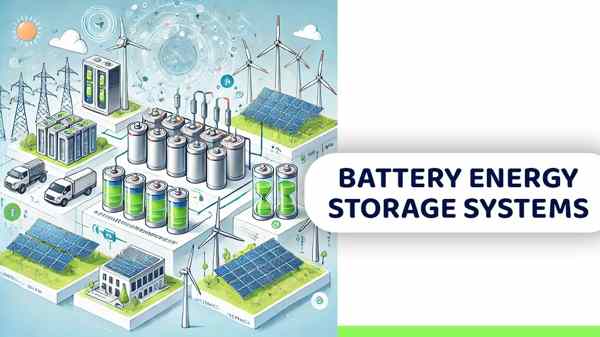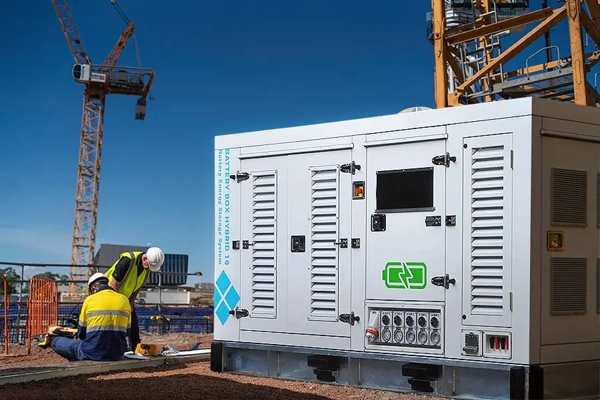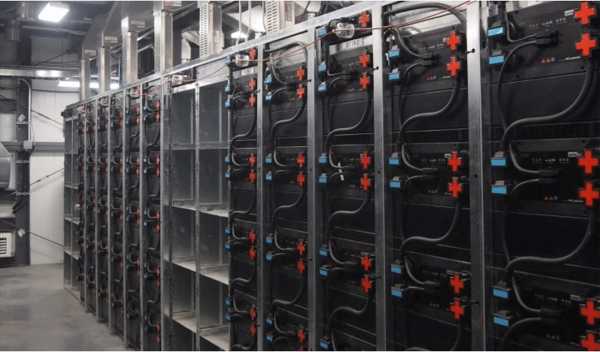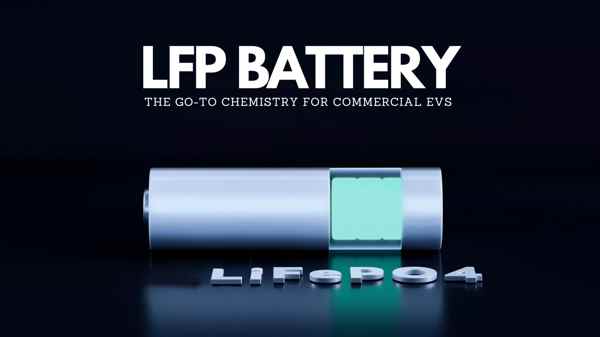Genereer Bess elektriciteit?
Terwijl je de wereld van zonne -kracht en energie -onafhankelijkheid verkent, Je hoort constant het acroniem "Bess." Het is een belangrijk onderdeel in moderne energiesystemen, Maar er rijst zich vaak voor een fundamentele vraag: Doet een bess eigenlijk genereren zijn eigen elektriciteit? Laten we de ware en krachtige rol verduidelijken.
Het eenvoudige antwoord is nee, een Bess (Batterij-energieopslagsysteem) genereert geen elektriciteit. In plaats van, Het is ontworpen om elektriciteit op te slaan die door een andere bron is gegenereerd, zoals uw zonnepanelen of het openbare rooster. Zie het als een "energiebank" - u doet deposito's wanneer energie overvloedig en goedkoop is, en je maakt opnames wanneer je het het meest nodig hebt.

Bij Gycx Solar, We zien een Bess als het hart van een modern energiesysteem, het component dat u controle geeft over uw kracht. Begrijpend dat het een opslagapparaat is, Geen generator, is de eerste stap om zijn ongelooflijke waarde te waarderen. Laten we meer over deze systemen onderzoeken.
Wat is een Bess Energy Store?
Dus, Als een Bess een "energiewinkel is," Wat betekent dat eigenlijk? Welke componenten zijn erin, en hoe werken ze samen om kracht vast te houden en te leveren voor uw huis of bedrijf?
EEN Bess Energy Store is een compleet, intelligent, en geïntegreerd systeem ontworpen om elektrische energie veilig op te slaan en te verzenden. Het is veel meer dan alleen een batterij. Een BESS bestaat uit verschillende belangrijke componenten die in harmonie werken:
- Batterijmodules: De kerneenheden die de energie fysiek opslaan (meestal met behulp van LFP-lithium-ionchemie).
- Batterijbeheersysteem (GBS): Het elektronische brein dat de batterijen beschermt en bewaakt om veiligheid en levensduur te waarborgen.
- Power Conversion System (Pc's): Een geavanceerde omvormer die DC -stroom van de batterijen omzet in AC -kracht voor uw gebruik, en vice versa voor het opladen.
- Besturingssysteem: De software die het hele proces beheert, Beslissen wanneer u oplaadt of ontlaadt op basis van uw instellingen, Zonne -productie, en roosterstatus.

Duik dieper: De anatomie van een energiebank
Zie een BESS als een hightech team waar elk lid een cruciale rol speelt. De Batterijmodules zijn het reservoir. De GBS is de veiligheidsmanager, constant de vitale borden van de batterijen controleren (Spanning, temperatuur, huidig) en hen beschermen tegen stress. De Pc's (omvormer) is de meertalige vertaler en gateway, Kracht omzetten tussen de DC -wereld van batterijen en zonnepanelen en de AC -wereld van de apparaten van uw huis. Eindelijk, de besturingssysteem is de teamcaptain, Uw energiestrategie uitvoeren - of het nu overtollige zonne -energie opslaat onder de NEM van Maleisië (Netto energiemeting) programma om 's nachts te gebruiken, of het geven van onmiddellijke back -upkracht op het moment dat een onweersbui een black -out veroorzaakt. Al deze componenten zijn ontworpen om naadloos samen te werken, Vaak gehuisvest in een slanke wandgemonteerde eenheid of een professionele rekkast. Bij GYCX Solar, Wanneer we een Bess Battery Energy Storage oplossing, We leveren dit heel, gecoördineerd team om uw energie te beheren.
Wat is het onderhoud van Bess?
Als u denkt aan stroomsystemen, U kunt denken aan lawaaierige generatoren die constante brandstofvullingen en vettig onderhoud vereisen. Wat voor soort onderhoud1 doet een modern, hightech BESS2 vereisen?
Een van de belangrijkste voordelen van een moderne lithium-ionbess is dat het vrijwel is onderhoudsvrij. Omdat het geen bewegende delen heeft en volledig is verzegeld, Solid-state systeem, Er is geen brandstof om bij te vullen, Geen olie om te veranderen, en geen regelmatig motortesten vereist. Het primaire "onderhoud" is simpelweg om de buitenkant van de eenheid schoon te houden en ervoor te zorgen dat de ventilatiepoorten onbelemmerd blijven.

Duik dieper: De "stel het in en vergeet het" Voordeel
Het onderhoudsarme karakter van een BESS is een belangrijk verkoopargument voor huiseigenaren en bedrijven. Dit is wat "onderhoud" Lijkt in de praktijk:
- Gebruikersverantwoordelijkheden (Minimaal):
- Houd het schoon: Veeg af en toe de buitenkant van de Bess -behuizing af met een droge doek om stofopbouw te voorkomen.
- Zorg voor goedkeuring: Zorg ervoor dat meubels, dozen, of andere items worden niet op een manier geplaatst die de luchtopeningen van het apparaat blokkeert. Juiste luchtstroom is essentieel voor koeling, Vooral in een heet klimaat zoals die van Maleisië.
- Zelfonderhoud van het systeem:
- De geïntegreerde GBS is de echte onderhoudstechnicus. Het werkt 24/7, automatisch de gezondheid van alle batterijcellen bewaken, Balancing hun lading, en ervoor zorgen dat alles binnen optimale parameters werkt.
- De software van het systeem zal u waarschuwen (Vaak via een smartphone -app) of uw installatieprogramma als het anomalieën detecteert die aandacht vereisen.
- Professionele controles:
- Hoewel niet strikt vereist op een frequente basis, Het is een goede gewoonte om een professioneel installatieprogramma zoals GYCX Solar om de paar jaar een systeemcontrole uit te voeren. Tijdens dit, We kunnen elektrische verbindingen inspecteren, Maak fanfilters schoon, en installeer eventuele beschikbare firmware -updates om ervoor te zorgen dat uw systeem blijft worden uitgevoerd bij topprestaties.
Vergeleken met het constante onderhoud van een generator, Het onderhoud van een Bess is verfrissend eenvoudig en hands-off.
Hoe ziet een Bess eruit??
Als u zich een "opslagsysteem voor batterijenergie voorstelt," Wat stel je voor? Een stapel industriële autobatterijen in een hoek? De realiteit van de moderne Bess is veel eleganter en compacter.
Een moderne Bess voor een huis of klein bedrijf is meestal in een van de twee hoofdvormfactoren:
- EEN Muurbevestiging: Dit ziet eruit als een strak, modern apparaat. Het is een single, zelfstandige eenheid die verticaal op een muur is gemonteerd, vergelijkbaar in grootte met een kleine kast of een moderne ketel.
- EEN Rack-mount bess: Dit bestaat uit verschillende modulaire, Rechthoekige batterij -eenheden (vaak "rackbatterijen" genoemd) die netjes zijn geïnstalleerd of "gestapeld" in een professioneel rek of kast van de vloer,.

Duik dieper: Form volgt de functie
De twee belangrijkste ontwerpen voldoen aan verschillende behoeften, Daarom bieden we bij GYCX Solar beide soorten oplossingen:
- Muur gemonteerde systemen:
- Verschijning: Ze zijn ontworpen met esthetiek in gedachten, het aanbieden van een schone, Minimalistische look die ver in de garage van een modern huis wordt geïntegreerd, bijkeuken, of zelfs buitenshuis.
- Het beste voor: Vloegruimte besparen, Dat is een enorm voordeel in veel Maleisische huizen. Ze zijn ideaal voor standaardcapaciteitsbehoeften (meestal 5KWH tot 15KWH per eenheid).
- Op rack gemonteerde systemen:
- Verschijning: Ze hebben een meer functioneel, Hightech-look en zijn gehuisvest in een kast vergelijkbaar met die welke worden gebruikt voor IT-servers.
- Het beste voor: Schaalbaarheid en hoge capaciteit. Het is heel eenvoudig om meer modules aan het rek toe te voegen om uw totale opslag te vergroten. Dit is de voorkeursoplossing voor grotere huizen met hoge energievereisten of voor commerciële toepassingen.
- Systemen op nutsschaal:
- Op de grootste schaal, Bess ziet eruit als verzendcontainers. Deze massieve containerige eenheden huisvesten honderden batterijrekken en worden door energiebedrijven gebruikt om het hele rooster te stabiliseren. Dit laat alleen maar zien hoe schaalbaar de kerntechnologie is!
Ongeacht de vormfactor, Een professioneel geïnstalleerde Bess is een nette, georganiseerd, en zelfstandige systeem.
Welke batterij wordt gebruikt in een BESS -systeem?
Wat zit er eigenlijk in de doos? Wat is de kernbatterijtechnologie die deze moderne energieopslagsystemen aandrijft? De keuze van de batterijchemie is de belangrijkste factor voor de veiligheid, levensduur, en uitvoering van een bess.
De overgrote meerderheid van de moderne Bess voor residentieel en commercieel gebruik wordt aangedreven door Lithium-ijzerfosfaat (LFP of LifePo₄) batterijen. Dit specifieke type lithium-ionbatterij is de industriestandaard geworden voor stationaire opslag omdat het de beste combinatie van biedt veiligheid, Zeer lange fietsleven, en uitstekende thermische stabiliteit, Het is veel superieur aan oudere leadzuurbatterijen of andere soorten lithium-ionen.

Duik dieper: Waarom LFP de keuze van de professional is
Bij GYCX Solar, Onze toewijding aan de veiligheid en de waarde op lange termijn van onze klanten is waarom we LFP-technologie exclusief gebruiken in onze BESS-oplossingen. Dit is waarom het de juiste keuze is:
- Superieure veiligheid: LFP is de veiligste en meest chemisch stabiele van alle gewone lithium-ionchemie. Het heeft een zeer hoge thermische weggelopen drempel, wat betekent dat het uiterst bestand is tegen oververhitting en vuur van brand. Dit is een niet-onderhandelbare functie voor een groot batterijsysteem dat in uw huis is geïnstalleerd, Vooral in een heet klimaat.
- Uitzonderlijke levensduur: LFP -batterijen zijn werkpaarden gebouwd voor dagelijks gebruik. Ze kunnen leveren 3,000 naar 6,000+ Cycli van diepe lading ontladen, wat zich vertaalt in een levensduur van 10 naar 20 Jaren in een typische zonne -toepassing.
- Duurzaamheid en prestaties: LFP is een robuuste chemie die goed presteert over een redelijk temperatuurbereik en geen kobalt bevat, Een conflictmineraal met ethische inkoopproblemen en prijsvolatiliteit.
- De alternatieven:
- Loodhof: De oudere technologie. Het is zwaar, heeft een veel kortere levensduur (3-7 jaren), is minder efficiënt, en vereist onderhoud (Indien overstroomd).
- NMC (Nikkel mangaan kobalt): Een ander type lithium-ion, vaak gevonden in elektrische voertuigen en elektrisch gereedschap waar het lichtere gewicht een voordeel is. Echter, Het heeft een lagere thermische stabiliteit en een kortere levensduur dan LFP, waardoor het minder ideaal is voor stationaire woningopslag.
GYCX Solar Story: "We leggen klanten vaak uit in Maleisië dat de tolerantie van de hoge temperatuur van LFP hier een groot voordeel is. Terwijl alle batterijen liever cool zijn, De inherente stabiliteit van LFP geeft het een extra marge van veiligheid en duurzaamheid in ons tropische klimaat, Daarom is dit de enige chemie die we vertrouwen voor onze thuis- en zakelijke installaties."
Dus, Wat is een Bess? Het is een compleet, Intelligent systeem dat de energie veilig opslaat die u kunt gebruiken wanneer u maar wilt. Met vrijwel geen onderhoud, Een levensduur van meer dan tien jaar, en een strak uiterlijk, Een moderne LFP Bess is een krachtige toevoeging aan elk huis of bedrijf dat op zoek is naar energiezekerheid en besparingen.
Als je meer wilt weten over hoe een Bess Battery Energy Storage Oplossing kan worden aangepast aan uw behoeften, Ons expertteam bij GYCX Solar is er om u te begeleiden. Neem vandaag nog contact met ons op voor een professioneel consult!
